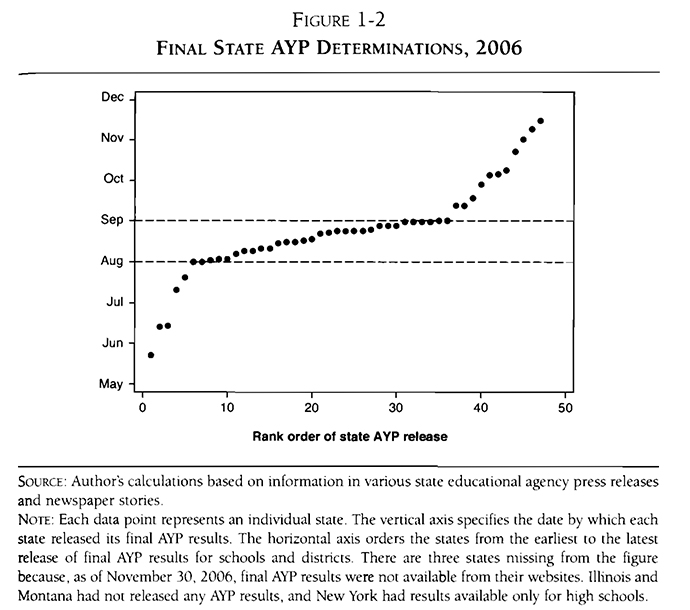It’s September. School is back in session in many places. And yet, state test results from last spring are still trickling out. Colorado’s came out September 1. The District of Columbia’s results officially came out last week. California’s results came out August 24th.

These results are too late for schools to do much with. Principals are busy running their schools, and teachers are busy in their classrooms. There’s no time for schools to draft improvement plans in response to results, let alone implement those plans in time to affect students. It’s no surprise that teachers and school leaders might not value a school improvement plan that’s drafted well into the school year, yet we’ve been repeating this cycle over and over again.
Ten years ago, I was a graduate assistant for College of William & Mary professor Paul Manna. We compiled every state’s Adequate Yearly Progress (AYP) determinations for the 2005-6 school year, and we found that most states were releasing results in August or September, well past the time when they could be most helpful to school improvement planning. The graph below shows what we found. Each dot represented one state, plotted based on when they released their school results.
This was 10 years ago, and a lot has changed since then. In 2006, most states were in their first years of statewide testing programs. NCLB was in its infancy, and states were just starting up their accountability systems. They barely had processes in place to compile the results and make them public. Computers were a lot less powerful back then, and every state was testing its students using paper-and-pencil tests.
States have been doing all this for 10 years now. And most states have now moved their testing systems online. Theoretically at least, we should be able to get results back much faster than we were in the past. But that doesn’t seem to be happening. I’m afraid that if we created the same graph today as we did in 2006, it would look nearly identical.
These delays represent a big kink in the theory of action behind school accountability. Without timely information, states can’t identify which schools need to improve and why. We can’t dump information on teachers and principals right in the middle of back-to-school season and expect they’ll be able to do anything meaningful with it. It’s too late to design a school improvement plan, and it’s too late to tell parents and families, “Welp, that school we assigned your child to is no good. Too bad they already started 4th grade there.” If we want to help schools improve, we have to improve the school improvement process.
—Chad Aldeman
This post originally appeared on Ahead of the Heard.



